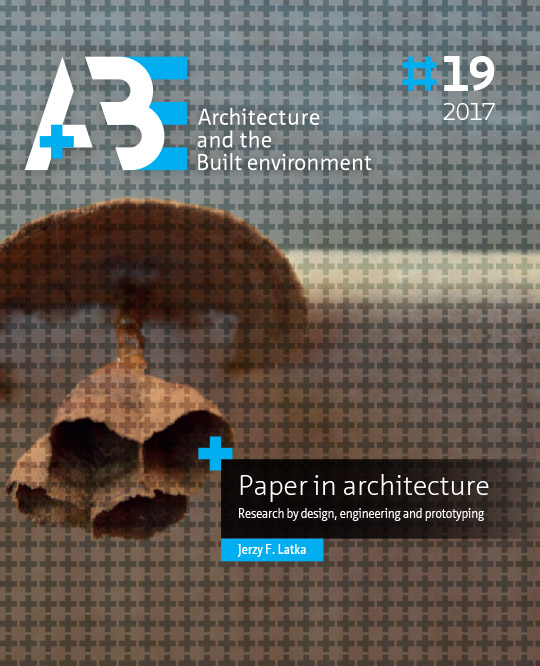Conclusions
DOI:
https://doi.org/10.7480/abe.2017.19.3763Abstract
This study has demonstrated how paper and its derivatives can be used as a building material and main structural material in design and architecture. The usage of paper in architecture is limited by many factors, including its vulnerability to moisture, humidity and water, creep and the limited variety of products created by the paper industry. However, paper and paper products can be successfully used in several types of architecture and design. The advantages of using paper in architecture are its low price, the fact that it is mass-produced, its ease of recycling and the mechanical properties of the material.
The paper industry’s current focus seems to be on packaging materials and new functionalities of paper and cellulose-based materials. Paper will never replace traditional building materials, but it can fulfil a niche demand created by certain designers and architects. It can be used for products such as interior and industrial design, including everyday objects, partition wall systems, furniture, exhibition pavilions, stage sets, venues for temporary events such as trade fairs or major sporting events, medium-lifespan housing (with a lifespan of up to twenty years) for the private and public sectors, public buildings emergency shelters.
This Chapter 8 presents the conclusions of this thesis. First, the research questions and sub-questions are discussed. The research questions are answered in the relevant chapters of the thesis. Chapter 2 presents the some fundamental research on paper, including its history, production, mechanical properties and products produced by the paper industry. Chapters 3 and 4 present the scope of paper usage in design and architecture. Chapter 3 presents the types of paper designs in architecture, while Chapter 4 outlines developments in paper architecture on the basis of sixteen realised structures. The buildings are described in detail, with a particular focus on structural engineering and the paper products used in the various projects.
Chapters 3, 4, 5 and 6 follow a research-by-design approach which includes engineering and prototyping. These chapters present prototypes of paper furniture, pavilions, domes and shelters, made of paper products such as corrugated cardboard, honeycomb panels, paper tubes and U- and L-shaped cardboard profiles. The prototypes in question were built by the author of this thesis and his students and partners. They demonstrate different approaches to the potential use of paper in architecture.
Chapter 7 presents the project of the Transportable Emergency Cardboard House. TECH is the final project encompassing the author’s fundamental, material and design research and previous prototypes. There are three generations of TECH, each of which is subsequently improved with regard to its design, structural system and method of impregnation.
Chapter 1 outlined two primary research questions, as well as seven secondary research questions. The answers to these questions can be found in the present chapter.

